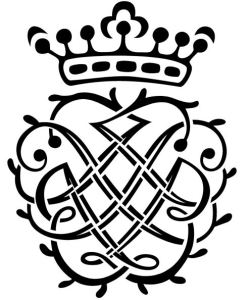Chorus vel Organa
Music from the Lost Palace of Westminster
Choir of Gonville & Caius College, Cambridge,
Delphian DCD34158. 66’56
Geoffrey Webber, director, Magnus Williamson, organ
Anon c1519: Processional: Sancte Dei pretiose; Ludford: Missa Lapidaverunt Stephanum (Gloria & Agnus Dei), Lady Mass Cycle (Agnus Dei, Alleluia – Salve Virgo, Gloria, Kyrie, Laetabundus); Cornysh Magnificat; Sheppard Hymn: Sancte Dei pretiose; Anon c1530: Offertory: Felix namque.

Anybody who has visited the Houses of Parliament in Westminster will probably have entered by the St Stephen’s entrance and walked through St Stephen’s Hall towards the famous ‘Lobby’, all built around 1850 to the design of Charles Barry. Most will not realise the significance of the St Stephen’s name, or what lies hidden beneath their feet. St Stephen’s Hall is the site of the mediaeval Royal Chapel of St Stephen’s, originally a private chapel for the King and his family and only accessible from the Royal Palace of Westminster. Barry’s sumptuous ceremonial hall was built on top of the surviving undercroft of the Royal Chapel, now known as St Mary Undercroft. The chapel was first mentioned in 1184, and was rebuilt by Edward I around 1292, a project that lasted many years. It was raised to the status of a college by Edward III in 1348, and developed an outstanding tradition of music which lasted until the dissolution in 1548 when it became the first meeting place of the English House of Commons, until 1854. Many of the current parliamentary traditions stem from these Continue reading →
 This recording features the music I heard in the second half of the concert reviewed here during the 2016 London Festival of Contemporary Church Music. The Choir of Gonville & Caius College, Cambridge and their director Geoffrey Webber join with four members of the European Music Archaeology Project: Barnaby Brown, playing the triplepipe and aulos, lyre player Bill Taylor and John and Patrick Kenny playing the ‘Loughnashade horn’ and carnyx. Continue reading
This recording features the music I heard in the second half of the concert reviewed here during the 2016 London Festival of Contemporary Church Music. The Choir of Gonville & Caius College, Cambridge and their director Geoffrey Webber join with four members of the European Music Archaeology Project: Barnaby Brown, playing the triplepipe and aulos, lyre player Bill Taylor and John and Patrick Kenny playing the ‘Loughnashade horn’ and carnyx. Continue reading 
